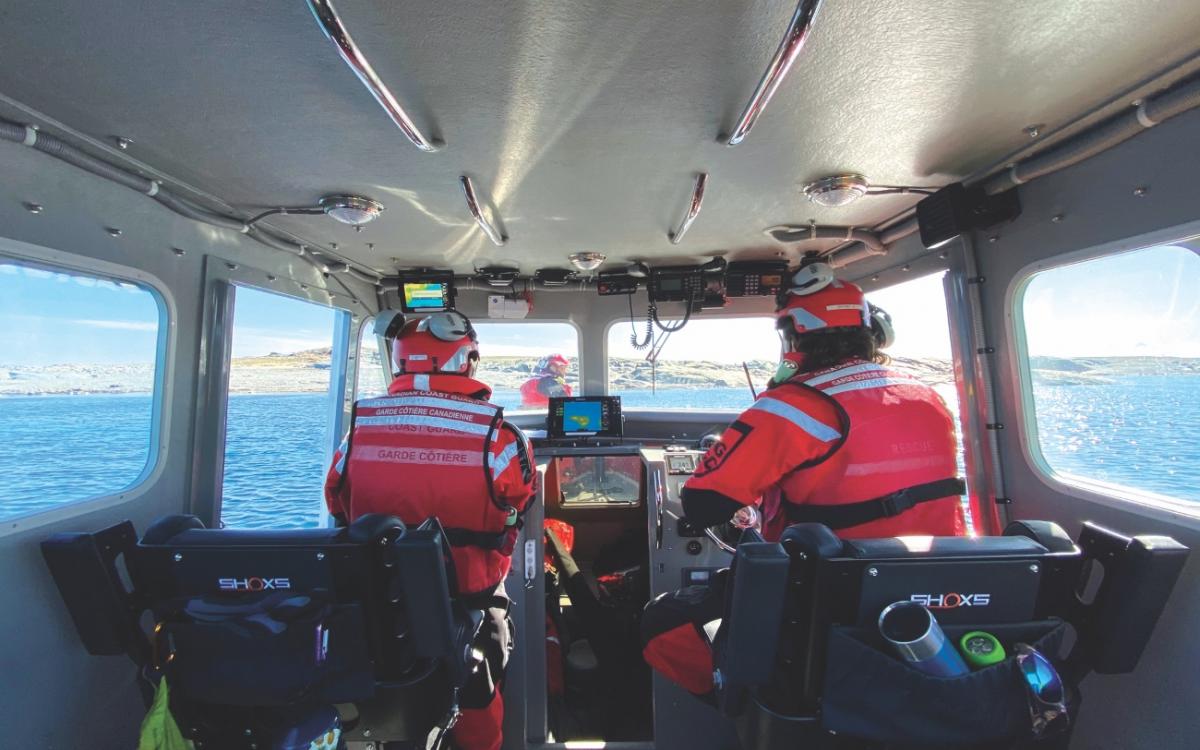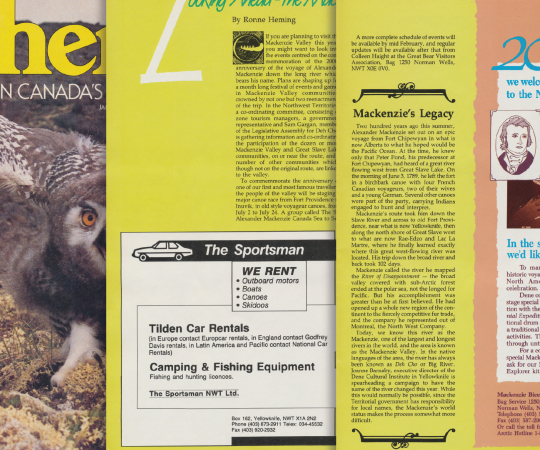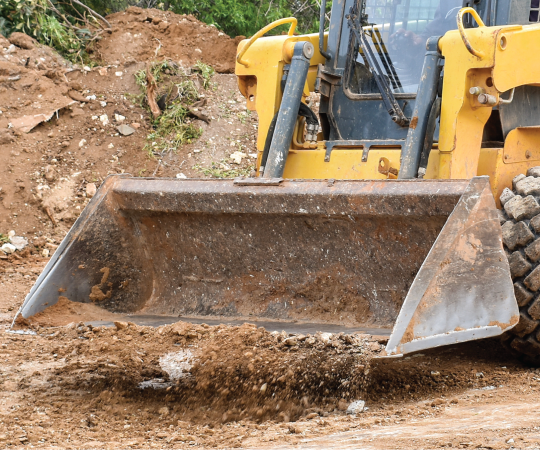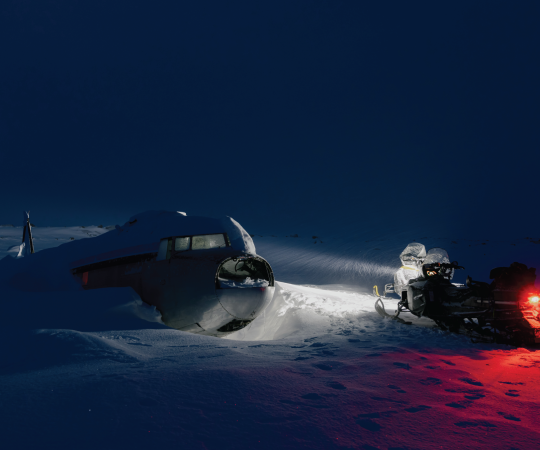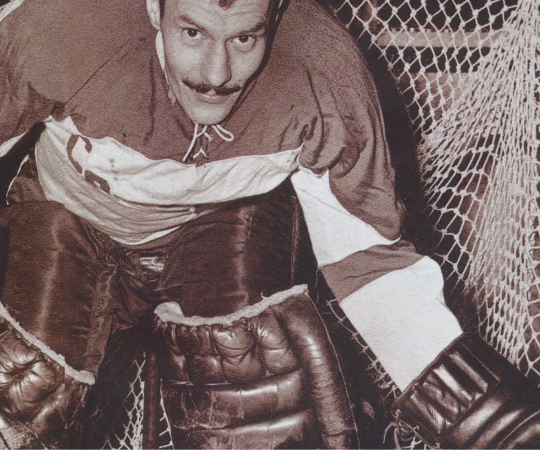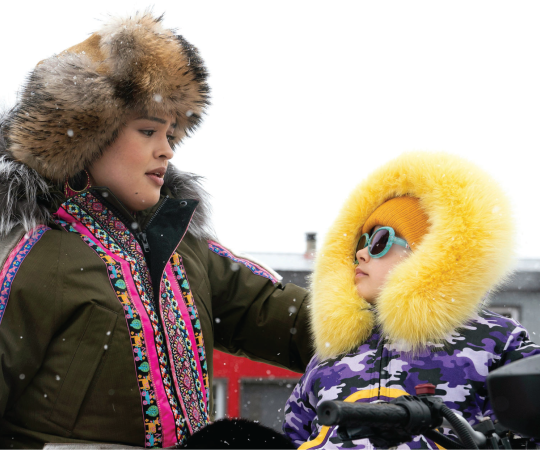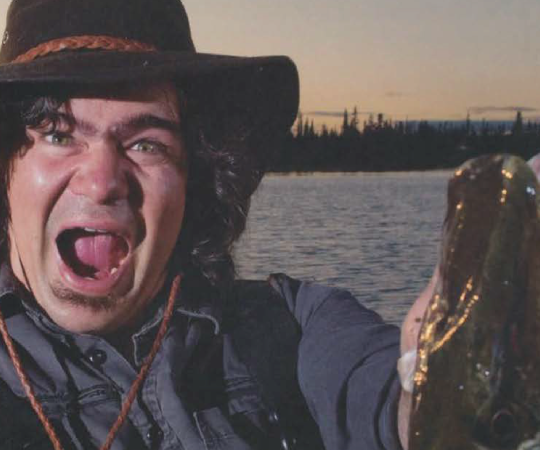An exhausted David Taylor paused to press his face against the glass of the helicopter window, squinting to see past the pelting snow. Seconds later his eyes were back on his map as he traced the route and calculated their current location. His hands were steady, but he knew time was running out.
Taylor and a team of eight others had spent two days aboard helicopters and bush planes, flying 300 kilometres outside Yellowknife in search of a missing hunter who had managed to get trapped under the snow. The RCMP, the Royal Canadian Air Force, the Civil Air Rescue Association and others, 100 people in total, were out searching for the man, but it was Taylor and his team who spotted him and brought him to the hospital staff at Gahcho Kue Mine. The team lowered the helicopter to a flat surface on the tundra, close to the survivor who was stiff and near-frozen to death. From the mine, he was flown to the Yellowknife hospital and ultimately, survived.
“That’s just one of the stories that comes to mind,” Taylor says. There are dozens more, he adds, amassed during his thirty years volunteering with the Civil Air Search and Rescue Association (CASARA). He’s reluctant to accept any praise for the volunteer work he does, chalking it up to a simple hobby.
“When we first moved to Yellowknife, my wife had a job where we thought she’d travel around the NWT a lot for work,” he says. “I signed up because it was something to do [when she was away].”
Taylor joined the crew as a spotter back in 1991, where he acted as a set of eyes to search for missing people. He eventually took on the roles of coordinator, recruiter, trainer and now president of the NWT channel. And while most of his time on board has been dedicated to training, as opposed to actual missions, CASARA has given him opportunities to explore both the NWT and all of Canada.
“I’ve flown to probably a dozen communities and across the country several times and I’ve been to all three coasts doing search and rescue training.”
It’s important that he, and the other 100 volunteers through CASARA NWT, get that training because they must be prepared to head into just about anything.
“We do everything we can to not become a statistic ourselves, but doing anything including getting out of bed in the morning has its risks,” says Taylor. “I have to trust my pilot. If something looks like it’s getting out of hand, I have to trust [the pilot] will pull the plug and go home. We depend on our pilots to be the primary safety authority.”
It shouldn’t come as a surprise to hear, between the frigid temperatures and the mostly unexplored landscape of the North, that a lot that could go wrong.
So what is it that makes people—volunteers especially—suit up and venture out into the unknown, unsure of whether they’ll return home themselves?
For Taylor, that answer is simple. “It’s an adventure,” he says.
Parks Canada Visitor Safety Coordinator Scott Stewart stands amid poplars and white spruce and looks up toward snow-covered peaks. Some ways off, within Kluane National Park and Reserve are turquoise waters and crystal-clear rivers that wind their way through valleys and fields of wild flowers. Stewart has spent 20 years exploring this park and yet he says he’s hardly scratched the surface of its sprawling landscape.
“There’s still a lifetime worth of trips out there,” he says. “Our sites are some of the largest in the world in terms of area as well as altitude.”
Among the park’s 22,013 kilometres is Mount Logan, Canada’s highest peak. At just under 6,000 kilometres, it’s the largest mountain in the world by area, circumference and mass. It’s also, understandably, a highly desirable climbing spot. But it requires expertise and it’s up to Stewart and his team to ensure visitors know what they’re doing. After all, a single rescue mission can cost anywhere from $60,000 to $100,000. That’s why Parks Canada recently instated a policy where adventurers must purchase insurance before going through the parks. Otherwise, it lands on tax dollars to pay for such rescues.
“If adventurers are choosing arduous routes through multiple mountain passes, [then we need to ensure they are] comfortable with a compass and navigational skills and ensure they’re aware and experienced with crossing creeks and streams,” says Stewart. “Because of the remoteness of our sites, the mountainous weather, which can be extreme and unpredictable all through the year, and the sparsely populated nature of the Yukon and lack of infrastructure at our sites, there are a number of hazards visitors interact with.”
An RCMP officer learned that the hard way when he stepped off his snowmobile and onto the unsteady ice, near Haines Junction. As he went to take a photograph of the scenery, the snow gave way beneath him and suddenly he dropped out of view, falling 80 feet into a crevasse. His partner rushed toward him and called down, but with the wind rustling across the sprawling landscape, there was not a sound to be heard. The other officer called for help and that’s when former Parks Canada warden Rick Staley and his team flew in to see if there was any hope.
“It didn’t look so good,” says Staley. He can’t recall exactly when it happened, except that it was during the Easter long weekend in the early 2000’s. But what he does remember is how cold, dark and windy it was as the team called into the depths and received no response. The helicopter pilot who flew them there was anxious to leave, so Staley eventually sent the aircraft back, leaving the team alone to work through the night. A few hours later, things started to look up.
“After the helicopter left, we yelled again and shone a headlight down because it was getting dark. And then we heard a faint voice from down below. He was alive.”
Parks Canada sent out two more people to help and the team worked all night, with some of them lowering themselves into the crevasse to chop at the ice. Hours later, the crew spotted the officer, standing on a small ledge in the pitch black, cradling a dislocated shoulder. He would have given up hope, had he not heard the static voices on his radio, which had fallen some distance away. The message repeated help was on the way, so he held on.
“Everyone thought the worst, but we were able to call his wife at four o’clock in the morning and have him talk to her and that made everyone pretty happy back here and everyone out in the field,” Staley explains. There are so many aspects of that mission that Staley credits to helping save the man’s life. It came down to the team he had with him, their ample training and most of all, their determination. Whenever it comes to these missions, he thinks back to a lesson his mentor told him.
“First of all, you don’t give up on people.”
When Staley’s career with Parks Canada began back in 1976, his role encompassed search and rescue, law enforcement and public safety among other roles. That meant having to know Kluane National Park as well as he possibly could. So every spring, Parks Canada sent him and his team out to explore for a few weeks at a time by camping, mountain climbing and hiking.
“So you learned how to camp together. We learned how to work together, and learned skills as well at the same time,” he says. It was also up to them to come up with an emergency plan of their own. “You always have to have a back up plan. You could end up needing search and rescue yourself because it’s very isolated in the national parks here.”
After retiring 17 years ago, Staley looks back on his time as parks warden with gratitude. Not every search and rescue mission turned out positively, but for the lives he saved, it was well worth it. He owes those successful missions to his coworkers who stuck with him for most of his 40-year-career.
“The best part was working as part of a strong team,” he says. “We retired around the same time too. So to me, that was the most satisfying part. A lot of us are still here in Haines Junction, so sometimes we get together and relive some of it.”
The roles at Parks Canada Yukon have become more specialized since Staley’s time. For example, his former role is now focused on law enforcement as of 2008, so other departments can focus solely on safety and search and rescue. In Nunavut, search and rescue is still a general duty, where everyone on the team learns first aid, wilderness first aid and swift water rescue, among other courses.
A need for organized search teams became more prominent across Canada in the 1980s when a child went missing in Halifax. That search for nine-year-old Andy Warburton was organized by someone with little experience in the field. There were more than 100 people out looking, but each group had different maps and radios, while communication between them was lacking. Unfortunately the child was found dead eight days after the search had begun.
That may have been the catalyst for the array of teams across Canada now. Each territory and province is prepared with a team for air, water, mountain and land searches. There are volunteer organizations, such as CASARA, which train and recruit dozens of people, who assist Parks Canada, RCMP and other federal and territorial organizations. And those teams are constantly evolving. Just look to the Inshore Rescue Boat (IRB) program that began in 2018.

Just off the shores of Rankin Inlet, you may find a group of young Inuit wearing red life jackets and helmets motoring through the waters, while a helicopter hovers overhead. You’ll see them there every summer now, thanks to the $1.5 billion federal Oceans Protection Plan. Partnering with the Canadian Coast Guard, the summer program trains Indigenous post-secondary students to conduct search and rescue missions across Canada. The post in Rankin Inlet also covers Chesterfield Inlet and Whale Cove. Here, students learn CPR, how to navigate and carry out search missions, among other live-saving skills.
“It’s a summer job that carries a lot of responsibility,” says Steve Thompson, Deputy Superintendent of Search and Rescue in the Arctic. He is one of the employees with the Canadian Coast Guard who helped implement this project.
Before 2018, search and rescue in Nunavut was run by several federal organizations like the Coast Guard and Royal Canadian Air force. But most were run by southerners and none were stationed in Rankin Inlet.
“It really depends on the situation, but in all likelihood, it would have been longer [for a search team to arrive to the scene] prior to the establishment of the Inshore Rescue Boat program,” says Thompson.
With this program, the leaders work with a community liaison, who’s familiar with the geography, traditional place names and can speak the local dialect. The team also learn about the hunting routes through the Hunters and Trappers Association.
“It’s such a vast geography with so many place names. There’s so much history there,” says Thompson. “As an organization we have to work with local representatives, hunters and trappers to really understand how things work and
the only way to do that is to continue that partnership.”
It’s that collaboration that has inspired many students to sign up for the summer job in the first place. Those students are already out for training at the time of writing this, but Thompson is able to share why many of them take part in IRB.
“Some of them joined because it looked like a neat summer job, some of them were familiar with the Coast Guard and already knew the intricacies and nuances of the job. And then there’s a third group who really saw this as an avenue to reconciliation between the Government of Canada and specifically Indigenous people.”
Although many join IRB for the job in between semesters, Thompson says some have stayed on, enjoying the adventure and value of search and rescue in the North.
In 2019, Taylor stepped up to the podium at Rideau Hall in Ottawa to accept an award from Canada’s governor general. He received the Sovereign’s Medal for Volunteers because of the decades he spent devoting himself as a recruiter, trainer and leader with CASARA. In fact, this year he is celebrating 30 years (and about half of his life) of service to search and rescue, but when asked about the award he received, he’ll tell you it
was “humbling.”
Like Stewart, Staley, and the many students at IRB, each one will take praise with a grain of salt. Because whether they’ve been part of search and rescue for 30 years or 30 days, they often see it as a job you take one day at a time. There are rough days and pretty tragic days, but they’re often outnumbered by the good ones. It’s the days where the team gets there on time or makes the right call and can bring people home safe and sound—those make it all worth it.
As Stewart says, “I think the most rewarding part of any search and rescue member’s job is to see their client come home at the end of the day and get hugs from their loved ones who are worried about them.”

